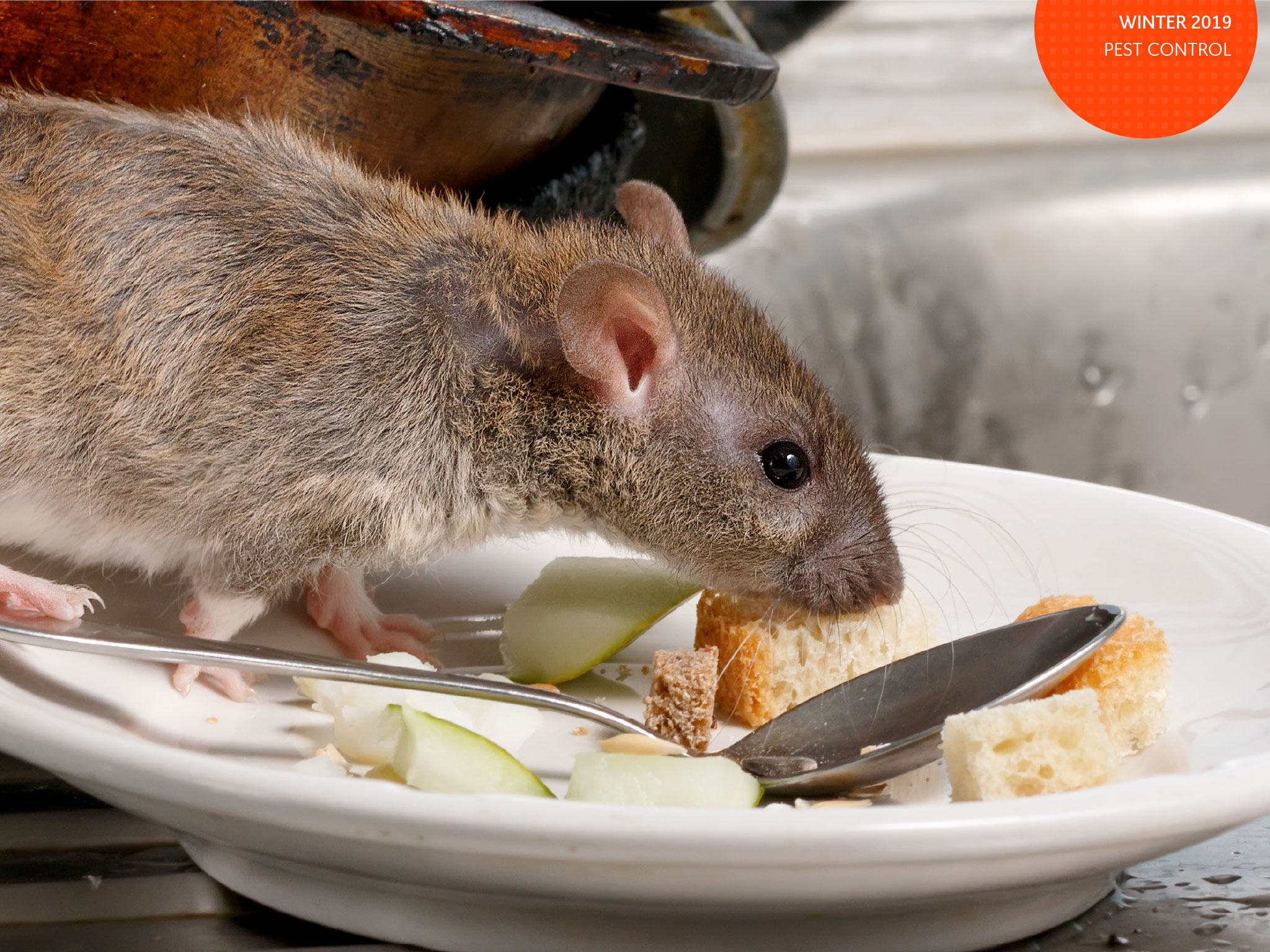




















WINTER 2019 PEST CONTROL Oh, rats! As the weather turns cold, rats and mice may seek warmth, shelter and food in your business premises As the seasons change, so do the types of pests that may cause problems. Rats and mice (rodents) are successful pest species because of their ability to live alongside humans and take advantage of our lifestyles. Like every species, food, water and shelter are important to rodents. When the weather turns wet and cold, and their food becomes more scarce, they will move toward homes and businesses, which are warm, and where shelter and food is often plentiful. If rodents are regularly sighted during daylight hours, this could mean the population has grown too big for its environment Rodents are most likely to be seen at dawn or dusk; if they are regularly sighted during daylight hours, this could mean the population has grown too big for its environment, or its shelter has been disturbed. There are several tell-tale signs that your business premises may have an infestation (see panel) so what action should you take if you are pestered by pests? For a start, keep indoor and outdoor areas clear of waste or anything that could give shelter to rats and mice. Ensure any holes or entry points around doors, pipework, ventilation, extraction points, toilets and sewers, and roofs are sealed so they cant get in. Keep on top of cleaning schedules and train your staff to identify obvious signs of rodents and other pests. Try not to overstock, as this can prevent staff from noticing obvious infestations. If you do have a lot of stock, take care with how it is stored; try to ensure it can be cleaned around and visually inspected easily. Rodent droppings and urine carry diseases that can cause serious illness. Where pest infestations cause a health risk, local councils can prosecute and even close down premises. If you have concerns, contact a pest control professional for advice or for a survey to identify potential problems or active infestations. If the problem is on a neighbouring property, and they are not taking action, contact your local Environmental Health service. Credit: David Elrington, regulatory services manager, Walsall Council Image: iStock / tenra For more information, contact the National Pest Technicians Association and the British Pest Controllers Association. HOW TO SPOT AN INFESTATION nSightings: if you see one rodent, there are likely to be more nearby nSmell: rodents produce a characteristic stale odour, which can be particularly noticeable in rarely used areas nRuns and smears: rats, in particular, follow the same routes when travelling. This can lead to smootheddown trails through earth/dust/ grass and so on. Where their fur rubs against surfaces, a greasy smear mark can appear over time nDroppings: a rat produces around nDamage: rodents gnaw, and this can 40 droppings per day and a mouse lead to obvious teeth marks, holes around 80 per day, so they soon build and damage to building fabric and up and become noticeable. products stored in the premises. For further information, please contact your local Trading Standards Service